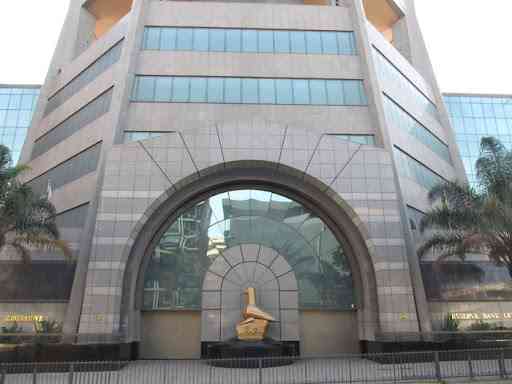
GREEN industrialisation is the process of restructuring a nation's traditional industries to make their operations environmentally sustainable.
It has been necessitated by the need to curtail climate change, along with the need for the preservation of resources, some of which have been rapidly depleting, due to traditional systems of industrialisation. As Zimbabwe is at a cross-roads regarding which form of green industrialisation it should implement, this article discusses how policymakers can manoeuvre within this topical space.
It is essential for Zimbabwean policymakers to avoid subscribing to economic strategies such as “de-growth”, whilst also being careful around the ideology of “grow now, clean up later”, as both can be problematic.
De-growth is an ideology which advocates for reduced national economic activity and consumption of goods and services among households and businesses, within an economy, in order to mitigate the environmental impacts associated with economic activity and consumption, especially when fossil fuels are central to an economy's operations.
Currently, it is the richer countries which are advocating for and touting this ideology as a means to restore global environmental integrity, including managing climate change. The challenge with de-growth is that it can be problematic for poorer nations such as Zimbabwe, which still have widespread national poverty and lack a number of developmental virtues.
That means applying the de-growth strategy in Zimbabwe, would leave the country stuck in a state of economic deprivation and social backwardness. Such a regression would likely be even more difficult to break free from, than the current existing limitations.
It could lock the country into a permanent poverty trap, concurrently reinforcing its peripheral role as an irrelevant player within the global economy.
On the other hand, a “grow now, clean up later” model, which prioritises heavy fossil fuel use, is becoming risky, in the context of today's global context because of at least two reasons.
- Embracing green buildings to save energy
- Time, gentlemen, please
- Brand partnerships
- Business opinion: Brand storytelling
Keep Reading
Firstly, the development and deployment of environmentally friendly technologies is currently facilitating the growth in innovative capabilities of various countries such as China, Japan, South Korea and Morocco.
The research and development (R&D) associated with experimenting with the new frontier of understanding, manufacturing and deploying renewable energy equipment is spilling over into the production of other high technology goods and services such as electric vehicles, stationary energy storage systems, and so forth.
It is widely understood R&D associated with manufacturing tends to diffuse into innovations which are also deployed in the services sector, where possible.
This statement is written with the understanding that several services use various tangible products in the process of serving their clients.
So, as countries which have embraced the transition to renewable energy increase their overall innovative capabilities, they are also spurring their own rapid productivity and economic growth, concurrently.
Thus, countries which are determined to continue predominantly using fossil fuels risk losing technological capabilities of the future, and face possible economic stagnation.
Secondly, proponents of the “grow now, clean later” philosophy should understand that the window of opportunity for fossil fuel-based economic growth is gradually closing.
Banks are becoming unwilling to lend to fossil fuel power station development projects in order to inspire the transition of economies towards green industrialisation.
At the same time, international and local regulatory constraints around carbon intensive industries are tightening. The threat of taxes on exports which are linked to high GHG emissions, currently known as “Carbon Border Adjustment Mechanisms” (CBAMs), implies that countries that do not clean up their industries may lose export competitiveness in the near future.
Additionally, domestic carbon taxes which are aimed at the realisation of Zimbabwe's Nationally Determined Contributions (NDCs) towards reducing emissions are also expected to rise with time, making it harder to reconcile between fossil-fuel based economic growth and NDCs.
The aforementioned details show that Zimbabwe's policymakers would do good to incorporate both policies for green growth and traditional growth models based on fossil fuels, in order to balance current risks.
Opportunities and challenges
This section explains opportunities and constraints that Zimbabwe faces in the area of green industrialisation.
Focus will particularly be placed on agriculture, manufacturing, the circular economy, renewable energy deployment, critical minerals, and, the African Continental Free Trade Area (AFCTA).
In agriculture, advanced economies have shown a greater commitment towards the mitigation of negative effects of agriculture on climate change and the environment.
They have proposed to address the aforementioned through interventions such as reducing the following within their countries: the use of fertilizers; land under commercial farming; the use of pesticides, herbicides and veterinary drugs, among others.
Expectedly, this has the potential to lower their agricultural yields and raise the price of agricultural produce within their territories, although the environment will be better off.
Those countries have shown limited commitment towards adapting their agricultural sectors to be more resilient to the damaging effects of climate change. Zimbabwe must be careful not to follow their route because it is not compatible with the country's poor developmental status.
Rather, Zimbabwe should focus on the adaptation of its agricultural sector to climate change, instead of mitigation of agricultural linked emissions, in a manner which reduces output.
This means domestic priorities should congregate around agricultural modernisation, coping with drought, addressing degraded soils, and so forth.
Zimbabwe's under investment in agriculture has led to poor yields, whilst significant portions of land remain fallow.
Local farmers do not use as much fertilizer, on a continent which uses only 30-40kg of fertilizer per hectare of cultivated crop, against global averages of a huge 135kg per hectare.
Fertilizer is mostly imported, whilst a number of issues such as poor logistics networks, and the presence of only a few players in the upstream fertilizer supply chains, make it much more expensive than global average prices.
As a result, Zimbabwe's national maize yields average around one tonne per hectare, against global averages for cereals at, 4,2 tonnes per hectare.
There is an opportunity to raise the country’s productivity and adaptation through the promotion of the widespread use of fertilizers, precision irrigation systems, the regulation of fertilizer prices, investing in research in drought resistant seeds, etc.
These interventions will help Zimbabwe build resilience and reduce the need to expand cultivated land, aggressively. Expanding cultivated land, amidst low yields can be problematic.
That is because the deforestation associated with it generally leads to higher GHG emissions generated as deforested trees release carbon into the atmosphere.
Greater investments into high value agricultural activities such as horticulture can also reward the country handsomely.
This will require the development of substantial local industrial and cold chain capabilities, improving local logistics systems, and negotiating for the ease of access of Zimbabwean exports into foreign markets, among others.
The year round production potential in certain crops make Zimbabwe poised to improve its contribution to global agricultural exports.
Light- and medium-technology manufacturing such as textiles, clothing, leather and footwear manufacturing; the fabrication of plastics and metals; wood products and furniture present a great opportunity for the country to leverage green industrialisation.
That is because these goods require less energy to produce and can therefore be easily integrated into green value chains.
Exporting such products under the banner of "low carbon products" would give them a competitive advantage in the global markets.
Transitioning to green manufacturing in these sectors would also help Zimbabwe to achieve its targets to reduce emissions as it promised at the UN. In this regard, the introduction of green industrial parks, or Special Economic Zones, which consolidate these industries into one geographical location could prove useful.
Deepening circular economy capabilities, such as supporting industries which recycle plastics and other disposed goods, should also be brought into consideration.
On the other hand heavy manufacturing sectors such as steel, cement, aluminium and fertilizers, present both a significant challenge and an opportunity in the green transition.
The challenge is that as a country develops towards high income status, it will eventually need much more of these commodities, making them contribute more to emissions than before.
However, collaborating with other countries in research around how to curtail emissions of these hard-to-abate industries can be progressive.
Additionally, Zimbabwe should stand ready to plead its case for leniency on international platforms under the UN principles of Special and Differentiated Treatment for developing countries if it fails to meet its emission reduction targets.
Tutani is a political economy analyst. — [email protected]










